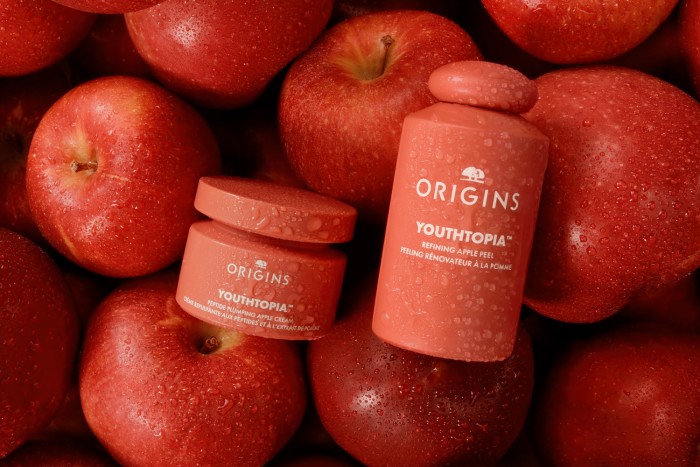can I clear my cystic acne?

Unlock the Editor’s Digest for free
Roula Khalaf, Editor of the FT, selects her favourite stories in this weekly newsletter.
Few things are quite as frustrating as waking up with a pimple before an event. But, let me tell you, cystic acne that leaves deep, pitted scars is in a league of its own. Acne is no longer just a teen skin issue. More than 25 per cent of women report suffering from acne well into their 40s – and I know from personal experience just how debilitating it can be.
Cystic acne causes large, painful lesions under the skin. Like all acne, it begins with clogged pores, but the cysts are larger and deeper. Unlike typical breakouts, cystic acne can cause significant damage to the skin, including pitted or raised scarring and hyperpigmentation, not to mention emotional distress.

One of the simplest ways to prevent scars is to avoid picking or squeezing, which causes further inflammation. Likewise, incorporating products containing two per cent salicylic acid or over-the-counter five per cent benzoyl peroxide (BP), such as Acnecide 5% w/w Gel, can help manage breakouts by acting as an antiseptic.
In my 20s, I went on a stepladder (or, rather, down a spiral staircase) journey with oral medications to treat my adult acne, starting with antibiotics prescribed to reduce bacterial growth. When that didn’t work, I used birth control pills and antiandrogens such as spironolactone to try to regulate my hormones. I then tried a course of isotretinoin, a powerful retinoid, but it brought with it significant side effects: in my case, spontaneous mood swings followed by depression. I wish I’d had access to the ingredient-led smart skincare I’ve since used to treat scarring and keep my skin blemish-free.

Tackle the breakout at the point of eruption. Seed To Skin’s Fermen’tonic contains a pore-refining, anti-inflammatory cocktail of lactic acid, silver lactate and antioxidant myrtle to soothe irritation and redness. Apply with pressing motions after cleansing to help rectify imbalances and strengthen the skin barrier function.

Dermalogica Deep Breakout Liquid Patch, £35 for 15ml

CeraVe Skin Renewing 10% Pure Vitamin C Serum, £29 for 30ml

Biologique Recherche Masque Vivant, £90 for 100ml

La Mer The New Deep Purifying Mask, £155 for 50ml

La Roche-Posay Effaclar Duo+M Anti-Blemish Corrective Gel Moisturiser, £20.90 for 40ml
On the topic of fermented anti-acne skincare, Origins Youthtopia Liquid Exfoliating Apple Peel is a brew of antioxidant-rich apple peel ferment, apple cider vinegar, glycolic, lactic and fruit-derived tartaric acid for powerful resurfacing. The list of ingredients may sound like the base of a salad dressing but the fermented nature of the peel helps to rebalance the skin’s diverse microbiome. Similarly, La Mer’s The New Deep Purifying Mask is packed with a renewing marine enzyme renowned for its ability to resist the impact of stress and toxins. I apply it whenever I feel a blemish coming on. It tingles slightly as the skin is purified and excess oil is pulled up, appearing as visible, satisfying dots, leaving the pores refined.
Another solution I rely on is Biologique Recherche’s Masque Vivant. Rich in vitamin B and Faex extract (yeast), it helps to promote skin integrity and unclog pores, while amino acids work to even out the skin tone around areas of scarring.
Post-inflammatory hyperpigmentation – dark spots that appear around trauma sites, a result of extra melanin after irritation – is one of the most challenging side effects of acne. Though some discoloration may fade over time, if the original spots were deep, it can be hard to bring skin back to its original tone. I always advise incorporating vitamin C into a daily skincare routine, no matter what the skin tone. CeraVe’s Skin Renewing 10% Pure Vitamin C Serum sits in the “Goldilocks zone” of 10 per cent concentration. Daily application not only brightens but helps skin heal, a function that loses efficacy when fighting acne breakouts.

La Roche-Posay’s Effaclar Duo+M Anti Blemish Corrective Gel Moisturiser tackles post-inflammatory hyperpigmentation with niacinamide, which helps to even skintone, and is especially soothing for those on drying prescriptive acne medication. Acne sufferers should also take care to apply sunscreen daily. Look for formulas containing vitamin C: studies show that it can amplify SPF. One such sun shield is Natura Bissé C+C SPF 50 Dry Touch Sunscreen Fluid, which creates a barrier against UVA/UVB and blue light radiation and helps to lighten dark spots over time.
Dr Emma Craythorne, a consultant dermatologist and founder of bespoke skincare brand Klira, treats cystic acne (both active and scarring) with the DermaV Laser. “The dual power of 1064nm and 532nm wavelengths target acne and brown and red pigmentation,” she says. She usually suggests four sessions spaced monthly, but stresses that patient-specific medical treatment such as isotretinoin is still “key”.
Maintaining a balanced diet is also important. I found Dr Federica Amati’s science-backed nutrition guide Every Body Should Know This (Michael Joseph) extremely helpful, because when it comes to eating to balance gut and skin health, one size does not fit all. For instance, red berries and citrus fruits protect against oxidative stress, known to exacerbate acne. Papayas contain papain, an enzyme that helps in exfoliating dead skin cells and reducing clogged pores. Tomatoes contain lycopene, an antioxidant that can reduce inflammation. Carrots and sweet potatoes, meanwhile, are rich in beta-carotene, which converts into vitamin A to promote healthy cell turnover. A healthy gut means happy skin.
#clear #cystic #acne






